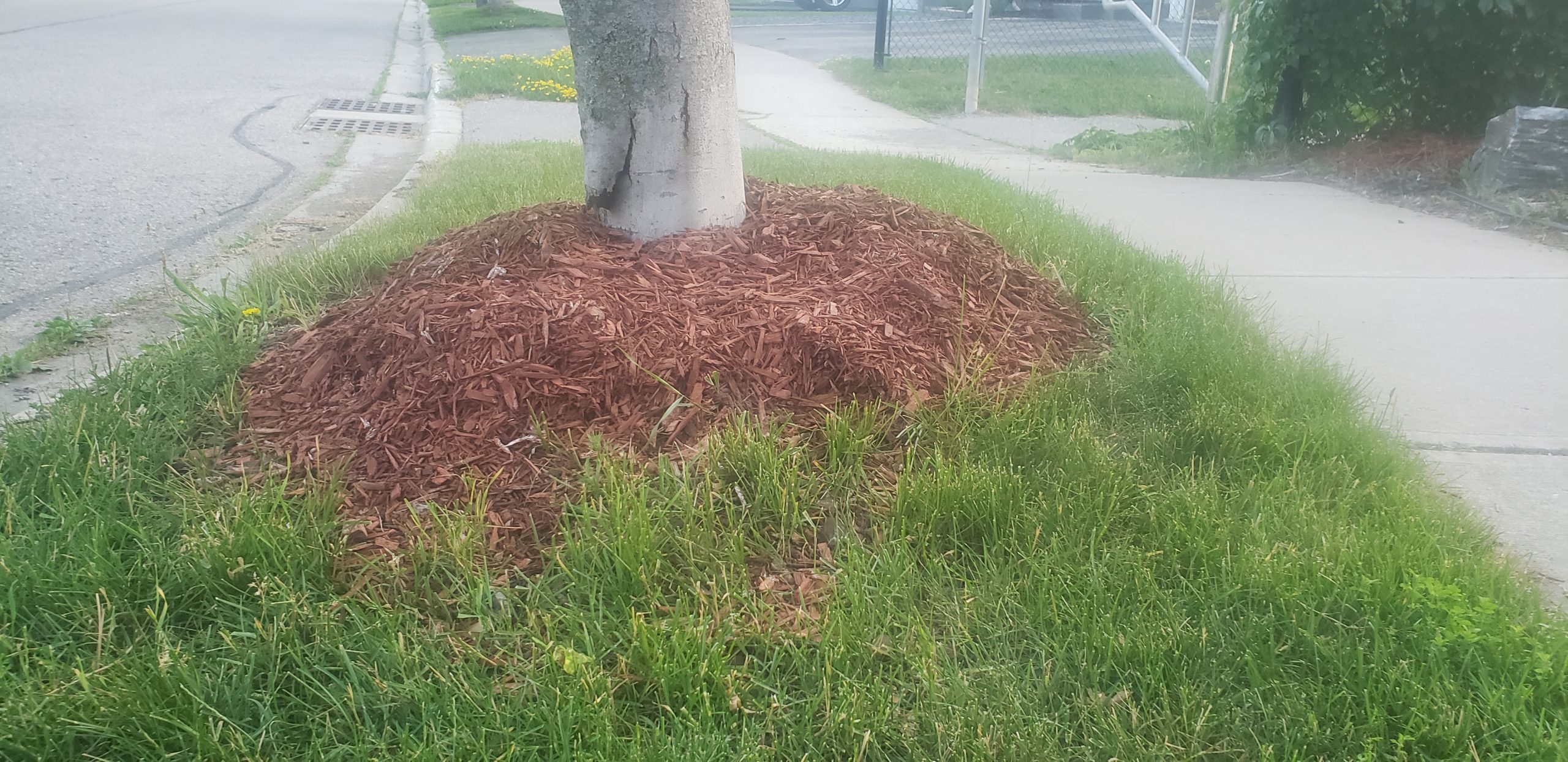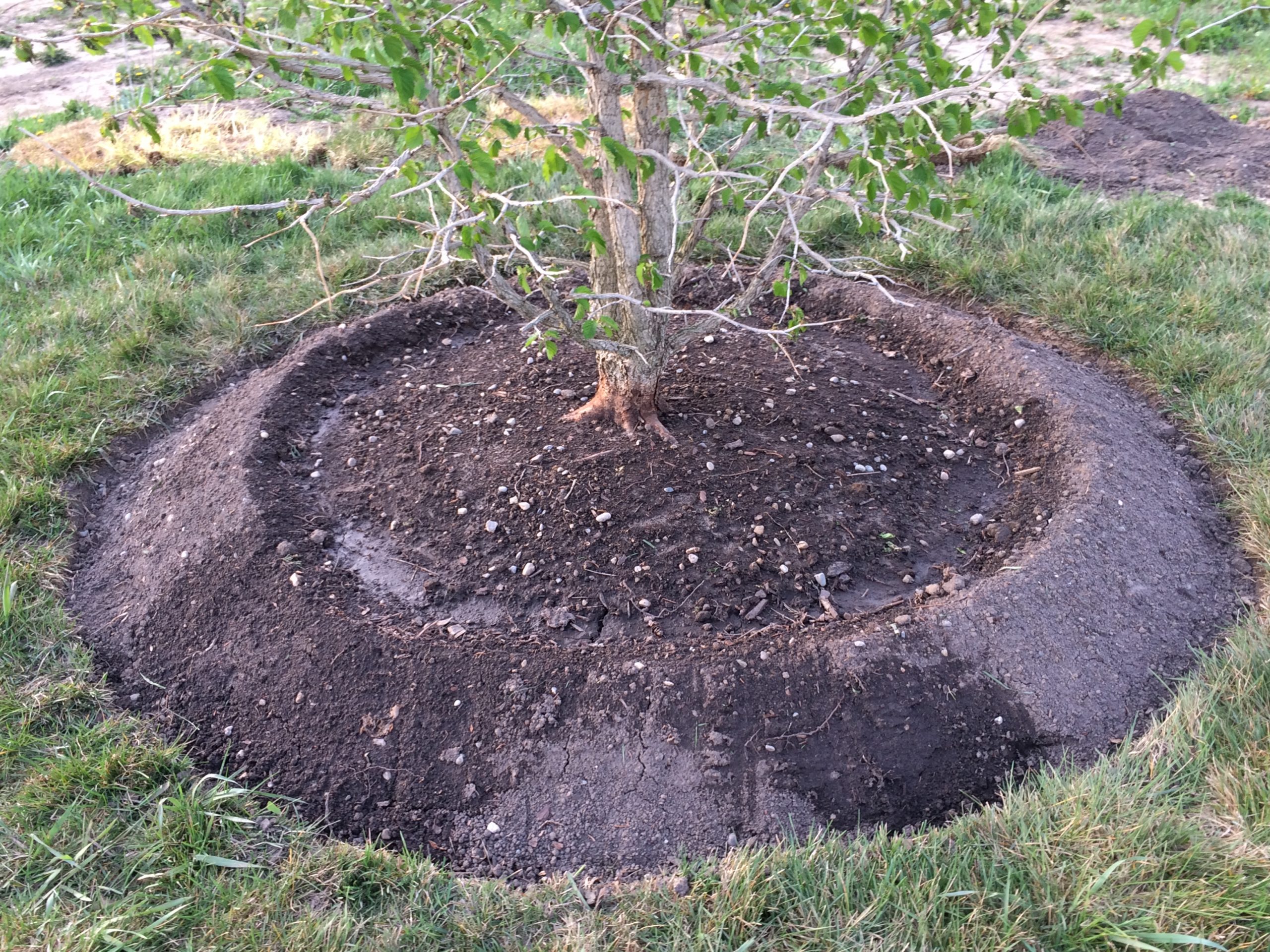| Membership | Price (+HST) |
|---|---|
| Single | $85/year |
| Single Plus | $120/year |
| Family | $130/year |
| Family Plus | $175/year |
| Contributing | $300/year |
| Supporting | $600/year |
| Sustaining | $1,000/year |
| Benefactor's Circle | $2,500/year |
| Director's Circle | $5,000/year |
| President's Circle | $10,000/year |
Tree Planting Tips
By Iona Whatford, Garden Interpreter and Jon L. Peter, Curator and Manager of Plant Records, Royal Botanical Gardens
There is a never-ending list of benefits to having trees in your yard. Environmentally speaking, trees help clean the air by absorbing CO2 and by filtering out harmful gases from the air. Trees can absorb large amounts of water runoff and restore underground water aquifers, while also preventing soil erosion through its large root system. Trees can save you money by cooling the air around you, both by providing shade and through transpiration cooling — a process that releases water vapour into the air from leaves, which can save you money on energy costs during the summer. Trees will also increase your property value, help buffer noise, encourage biodiversity in your area and add beauty to your yard.
Trees also have immense value when it comes to your health — scientific studies have shown that spending time near trees will reduce blood pressure, lower blood-sugar levels, lower stress, improve concentration and memory, help lift depression, improve energy levels, help you lose weight, improve your metabolic health and so much more.[1]
You might be thinking “I’d love to plant a tree in my yard, but I’m not sure what kind to choose”, or “where it should go”, and “I don’t know where to start”. Well, if that’s you, then you are in luck! Here are some tips shared by Jon Peter, RBG’s Curator and Manager of Plant Records to plant a happy healthy tree.
1. Consider your space. Be aware of all the environmental conditions that might affect the growth of your tree, such as your hardiness zone, how large the space is for both the crown and the roots of the tree, the soil type and drainage patterns, exposure to sun and wind, how much water the space will get, and any reflected heat or possible damage that could occur from nearby structures or roadways. Taking these factors into account will help you choose what tree will suit your space. The Ontario Landscape Tree Planting Guide has helpful worksheets to help you assess your space, pages 57–99.2
2. Choose your tree. Making note of the conditions for your space, you can now choose your tree. Using the Ontario Tree Atlas can help you figure out what tree is best for your conditions.3
3. Dig the hole for your tree. Your hole should be 2–3 times the width of your root ball, but no deeper than the length from the root flare to the bottom of the root system of your tree. The root flare is where the tree begins to flare out into the roots, and it looks something like this image.

It is very important to plant your tree so that the soil is level or slightly below your tree’s root flare; this ensures the soil underneath your tree is not disturbed and won’t allow the tree to sink or settle in over time, and it also ensures proper oxygen circulation for the roots of your tree.
4. Prep the roots. Now is the time to prune any problematic roots (girdling, circling, damaged) on your tree. Make sure to loosen the root ball and get the roots free enough so they can spread in the ground horizontally.
5. Plant and water your tree. Now that you have placed your tree in the centre of the hole, you can pack soil around the roots. Be sure to deeply water the entire planting area to reduce large air spaces and provide adequate soil moisture so new roots can establish themselves.
6. Mulch. Using the hole you dug as your guide, spread 2–3 inches of medium texture, natural mulch on the soil surface around your tree, but be sure not to build the mulch up around the trunk of your tree; this can will hold extra moisture around the base of your tree and could lead to disease. Instead, ensure the mulch is not touching the trunk. You should still be able to see the root flare. Consider building up the soil and mulch around the perimeter of your planting hole to create a saucer for easier irrigation.


7. Stabilize your tree if needed. Depending on the size and variety of tree you plant, and where you have planted it, it may require stabilization. A tree that is planted properly does not necessarily require stabilization. Stake the tree so that the root system is stabilized, leaving the crown to move freely. The tree should be able to sway in the wind, without the roots being disrupted. You can stake your tree on opposite sides in the direction of prevailing winds or use three stakes forming a triangle shape around the tree with one stake in the direction of prevailing winds. Make sure to place the stakes outside of your mulched area in the soil that was not disturbed. Connect the trunk of the tree to the support stakes using wire, rope, hose, or straps that will not damage the bark. Attach the straps within the lower 1/3 of the trunk, usually within 1–3 feet from the top of soil. Keep the stabilization on for up to a year but be sure to remove them after that to prevent any damage.
8. Aftercare. Trees can experience transplant shock after planting. Depending on the size of the tree planted and conditions it was planted in, this shock period could last for many years. It is important to provide adequate care for the duration of the transplant shock until the tree is established. Aftercare can include irrigation, pruning, nutrients, mulching, and protection from pests and diseases to ensure the future growth and success of your newly planted tree.
Now you are ready to go and out and plant a tree! Be sure to refer to the Ontario Landscape Tree Planting Guide for more information and for tree planting worksheets. Happy planting!
References:
1 Dr. Li, Qing w(2018). Forest Bathing, how trees can help you find health and happiness. New York, pp. 38
2 McGrath, Darby, Ryan Munroe, Jason Henry (2019). Ontario Landscape Tree Planting Guide. Landscape Ontario Horticultural Trades Association, Milton, ON, pp. 99
3 Ministry of Natural Resources and Forestry (2012–21). The Tree Atlas. Government of Ontario. https://www.ontario.ca/environment-and-energy/tree-atlas
More from the RBG Blog
Check out RBG’s blog for announcements, articles, and more from Canada’s largest botanical garden.
Want to be sure you hear first? Sign up for our weekly e-newsletter to hear about upcoming events, weekend activities, articles, and more!












